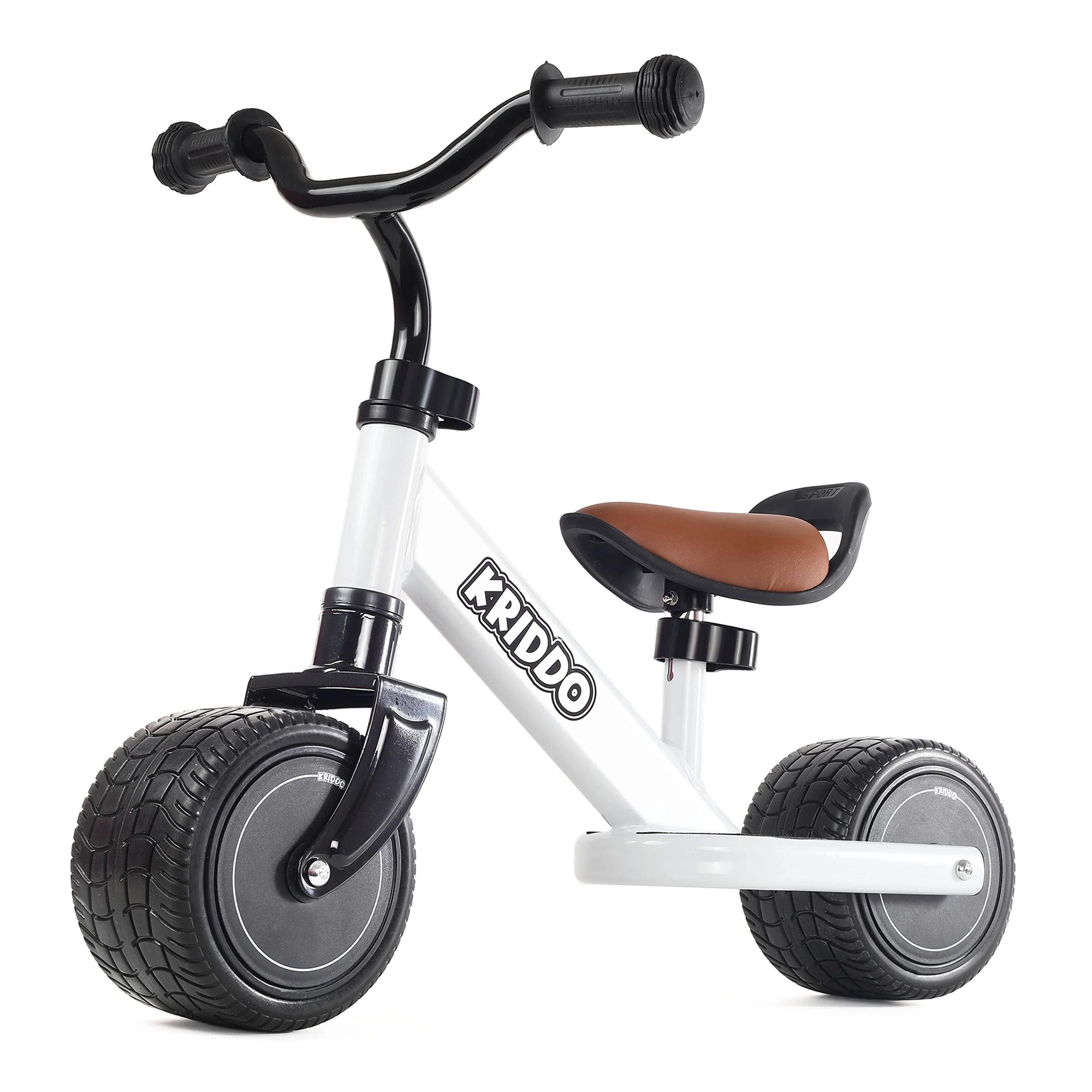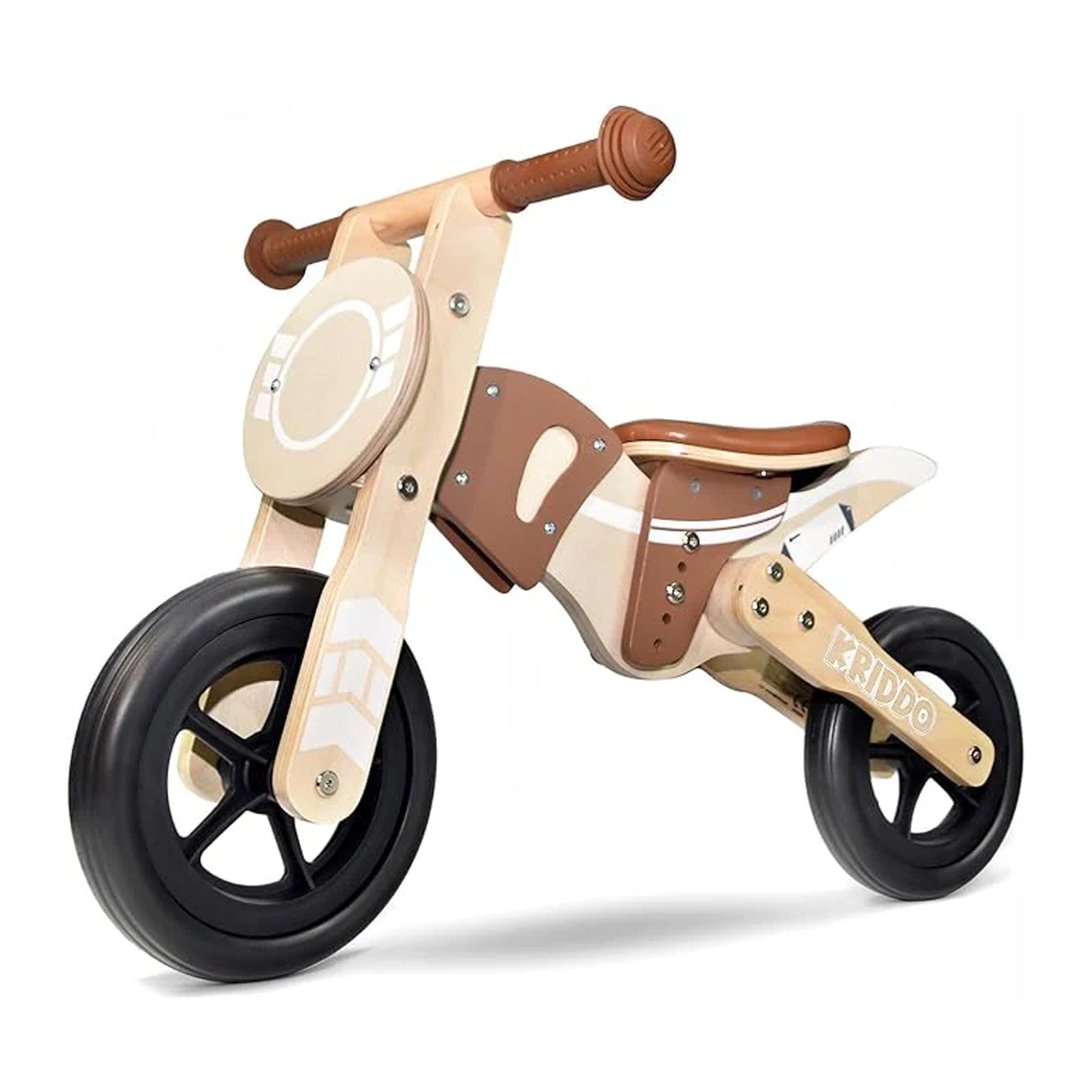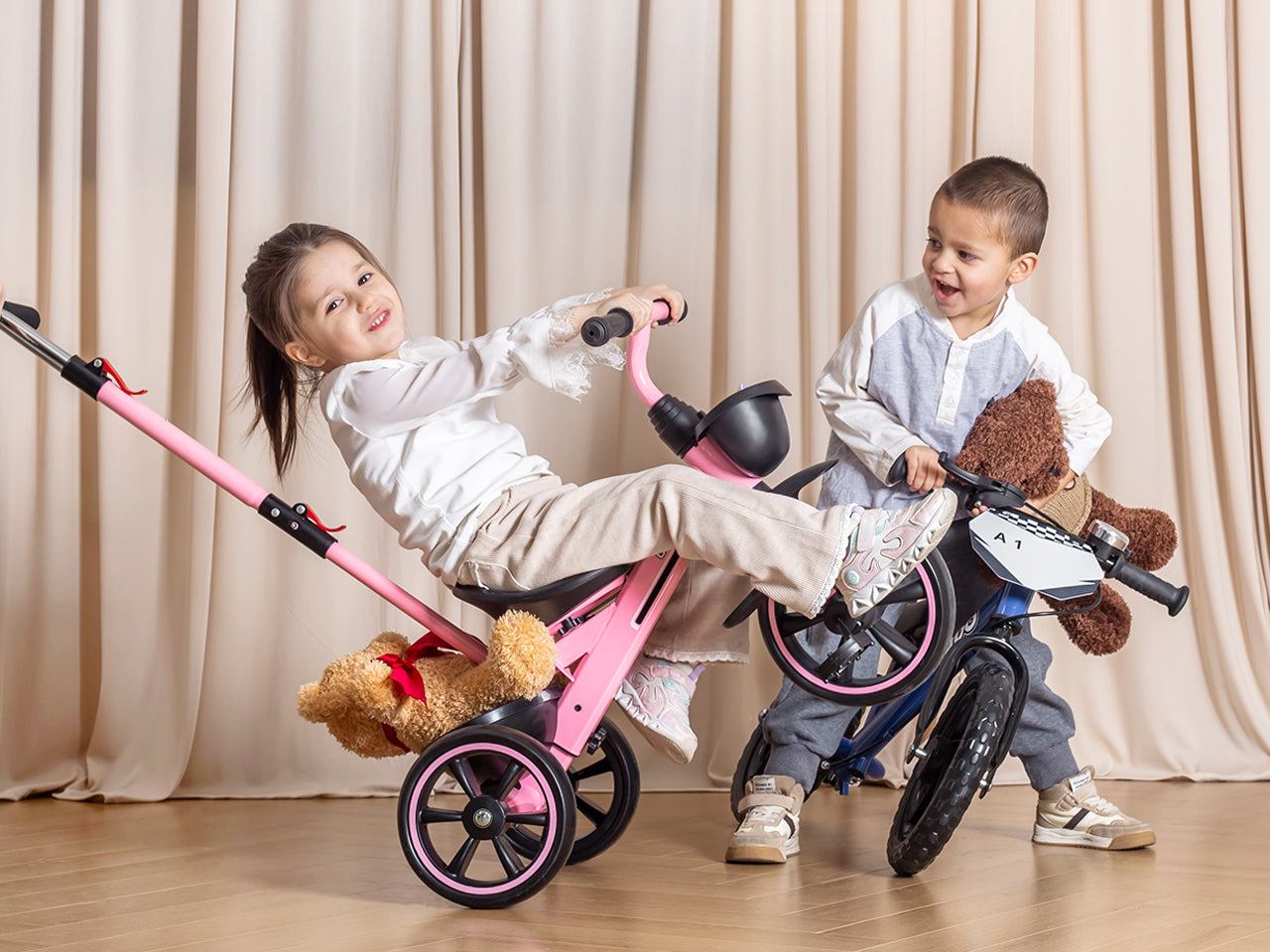Cathy- Nov 27 2024
Beginner’s Guide: How to Teach Your Child to Ride a Balance Bike Safely

Balance bikes have become a popular choice for parents in recent years. Not only do they help children develop balance and coordination, but they also offer endless outdoor fun.However, many parents feel overwhelmed when first introducing balance bikes—everything from choosing the right one, to teaching, and ensuring safety, can feel like a challenge. Don’t worry! This guide will walk you through the steps to teach your child to use a balance bike safely so that they can master this skill in a fun and stress-free environment.
1. What is a Balance Bike?
Definition and Features.
A balance bike is a two-wheeled bike designed without pedals, specifically made for young children. Unlike traditional bicycles, the main focus of a balance bike is to help children develop their balance skills, rather than learning to pedal first. Its simple structure and lightweight design make it ideal for kids ages 2-6.
Benefits of a Balance
- Bike Enhances Balance:Riding a balance bike allows kids to naturally feel their body’s center of gravity and adjust it, helping them build core strength.
- Prepares for Pedal Bikes: Compared to jumping straight into a pedal bike, a balance bike offers a safer and more gradual transition.
- Boosts Confidence and Independence: When children successfully glide a certain distance, they experience a sense of accomplishment like never before.
2. What You Need to Prepare Before Teaching Your Child to Ride a Balance Bike
Choosing the Right Balance Bike
A balance bike that doesn’t fit your child’s height and weight not only affects their learning experience but could also pose safety risks.
Here’s what to look for:
- Adjustable Seat Height: The seat should be adjustable so your child’s feet can touch the ground comfortably, with knees slightly bent. For instance, KRIDDO balance bikes feature an adjustable seat, ensuring that your child’s feet stay firmly grounded as they ride, which is essential for both balance and confidence.

KRIDDO Balance Bike Adjustable Seat Height for Kids Comfort and Safety
- Lightweight Frame: The bike should weigh no more than one-third of your child’s body weight for easier control.
- Trusted Brands: Opt for well-known brands that prioritize safety. KRIDDO, for example, focuses on child-safe design and adheres to multiple safety certifications, so you can trust that it’s a reliable choice.
Safety Gear is a Must
Even though balance bikes don’t have pedals, falls are inevitable as kids learn. Ensure your child is equipped with the necessary safety gear:
- Helmet: Make sure the helmet meets CE or CPSC standards, fits snugly on their head, and doesn’t wobble.
- Knee and Elbow Pads: Protect joints from injuries in case of falls.
- Gloves: Prevent slippery grips and protect little hands from abrasions.
Choosing a Safe Practice Area
The right environment can significantly impact both the safety and success of your child’s training. Look for flat, open spaces, such as park sidewalks or residential streets. Avoid areas with traffic or steep hills.
3. How to Teach Your Child to Ride a Balance Bike
Step 1 Beginner Stage: Getting Familiar with the Balance Bike
- Adjust the Seat Height: Ensure the seat is at a height where your child’s feet can touch the ground comfortably. This helps reduce fear and builds confidence.
- Encourage Pushing the Bike: Have your child practice pushing the bike along flat ground to get used to the handlebars. You can walk alongside them, holding the back of the bike to help them gain control.
- Make it Fun: Start with easy activities, like “Let’s see who can push their bike the furthest!”

Step 2 Learning Stage: Balancing and Gliding
- Learn to Push with Their Feet: While seated, encourage your child to alternate pushing with their feet, gradually enjoying the sensation of gliding.
- Focus on Balance: As your child gains confidence, encourage them to lift their feet and balance, even if it’s just for short distances.
- Add Interaction: Set simple goals, such as “Let’s ride to that tree” or “Let’s go around this circle,” to make learning more engaging.
Step 3 Advanced Stage: Turning and Control
- Practice Turning Techniques: Teach your child to lean slightly when turning and to steer the handlebars with both hands. Here’s something important for parents to note—when your child is turning, you don’t want them overcorrecting, which can lead to falls or getting trapped between the frame. Choosing a balance bike with a Limited Steering Safety Feature is crucial!
- Braking and Stopping: If the balance bike has a brake system, practice stopping with your child repeatedly to ensure they know how to brake safely in an emergency.
4. How to Ensure Your Child’s Safety While Riding a Balance Bike
- Always Supervise: Especially in the early stages, your presence is crucial for safety.
- Set Simple Rules: Teach your child to maintain a straight line while riding and to stay aware of their surroundings.
- Check the Bike Regularly: Inspect the wheels, brakes, and screws for looseness. KRIDDO balance bikes are built with high-quality carbon steel frames, ensuring durability and minimizing common mechanical issues.
- Practice Obstacle Avoidance: Teach your child how to navigate around obstacles by setting up cone markers in an open space for practice.

KRIDDO Balance Bike Ensuring Kids Comfort and Safety
5. How to Make Riding a Balance Bike More Fun
- Create Adventure Scenarios: Set up “obstacle courses” in the grass or invent “adventure” stories to keep your child engaged.
- Ride with Other Kids: Organize family bike rides or invite neighborhood children to join in.
- Track Their Progress: Use your phone to record your child’s journey from their first ride to becoming a confident rider, and show them their progress to build their self-esteem.
KRIDDO Kids Tricycles Review - Is It Worth It?







































